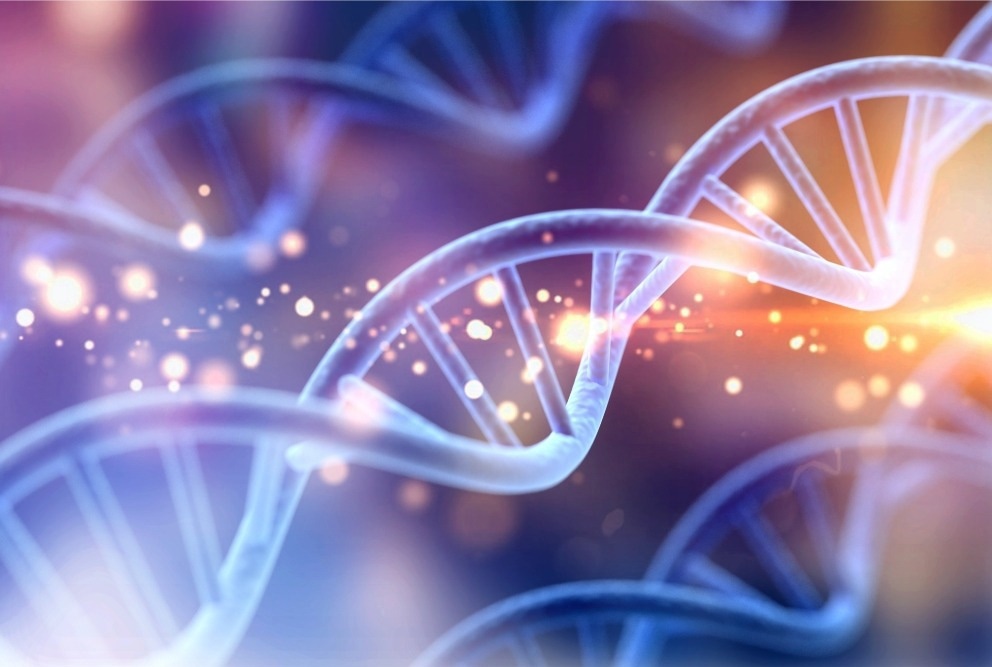Scientists from Weill Cornell Medicine and the New York Genome Center, in partnership with Oxford Nanopore Technologies, have introduced a new method for assessing the three-dimensional structure of the human genome, as well as how the genome folds, on a large scale. The genome is the entire set of genetic commands, either DNA or RNA, that allow an organism to operate.
 Illustration of DNA. Image Credit: Shutterstock
Illustration of DNA. Image Credit: Shutterstock
Using this technique, the authors indicated that groups of concurrently conversing regulatory elements in the genome, instead of pairs of these components, could influence cell function, such as gene expression. Their findings, which were published in Nature Biotechnology on May 30th, 2022, may help spread light on the topic between genome structure and cellular authenticity.
Knowing the three-dimensional genome structure will help researchers better understand how the genome functions, and particularly how it encodes different cell identities.”
Dr Marcin Imieliński, Study Senior Author and Associate Professor, Pathology and Laboratory Medicine and Computational Genomics in Computational Biomedicine, Weill Cornell Medicine
“The ways that we’ve had to study genome structure have given us amazing insights, but there have also been key limitations,” he said.
Dr Imieliński was also a core member of the New York Genome Center.
Initial technology to evaluate the three-dimensional structure of the genome, for instance, has permitted scientists to examine how regularly two loci, or physical locations on the genome, communicate with one another. Historically, pairs of loci known as enhancers and promoters have been observed—components in the genome that communicate with one another to affect gene expression.
Knowledge of these pairings provides only a hazy picture of genome structure and function. Connecting a folding pattern to how the genome encodes for a specific cell authenticity, such as a liver, lung, or epithelial cell, for example, has been challenging, according to Dr Imieliski, who is also a member of Weill Cornell Medicine’s Englander Institute for Precision Medicine and the Sandra and Edward Meyer Cancer Center.
Researchers have speculated that this folding impacts gene expression. “But how cell types are encoded, particularly in the structure of DNA, has been a mystery,” he said.
Dr Imieliski and his research group, which included first author Aditya Deshpande, a recent graduate of the Tri-Institutional PhD Program in Computational Biology & Medicine who works in Dr Imieliski’s lab initiated a unique genome-wide assay and algorithm that enables them to study groups of loci rather than just pairs.
They adjusted Hi-C (chromatin conformation capture), a traditional technology that evaluates a mixture of DNA and protein to analyze three-dimensional genome structure, to nanopore sequencing, or the elevated sequencing of lengthy, constant strands of DNA molecules. The subsequent assay, Pore-C, allowed the researchers to notice tens of millions of three-dimensional locus groupings.
They also created quantitative methods for determining which locus groupings were significant based on whether they conversed cooperatively to influence gene expression.
“Many three-dimensional interactions of the genome are not important,” Dr Imieliński said. “Our analytic methods help us prioritize the group interactions that are likely to matter for genome function,” he added.
The scientists found that the most substantial cooperative groupings of DNA elements happened around genes related to cell identity, which was a significant point of the study.
Future research will look into which specific groups of genomic components are required for numerous stages of cell identity. The technological innovation may also aid researchers in better understanding how stem cells, the body’s immature master cells, distinguish into various cell types.
Furthermore, scientists may be able to better understand irregularities in cancer cells.
“In the future, this technology may help understand how cancer cell genomes are rearranged, and how those rearrangements drive the altered cell identities that enable cancers to grow and spread,” Dr. Imieliński said.
Source:
Journal reference:
Deshpande, A. S., et al. (2022) Identifying synergistic high-order 3D chromatin conformations from genome-scale nanopore concatemer sequencing. Nature Biotechnology. doi.org/10.1038/s41587-022-01289-z.